OUR COMMITMENTS
Saal Design stands in solidarity with the Black community and is committed to working towards dismantling systemic racism, especially within the interior design industry…
Saal Design stands in solidarity with the Black community and is committed to working towards dismantling systemic racism, especially within the interior design industry.
Like many of those who work in the interiors industry in the UK, I am white and middle class. However, I have spent the last 30 years raising my mixed-heritage children. I have witnessed my children and their father experience overt racism time and time again and it is something that, although I know I will never understand first hand, I am very committed to fighting.
My role during this time is not to lead, but to support and amplify. With that in mind, my daughter, Romy, who works alongside me at Saal Design, has offered to assist with this statement.
The lack of ethnic and economic diversity within the interior design industry has been a conversation we’ve been having internally at Saal Design for a while. I’ve been in the industry for over three decades and have seen very little improvement or development; industry events remain mainly white, high wealth spaces.
Over the last year, it was becoming increasingly apparent that, as a company, we would need to find ways to start this conversation publicly within our industry. It is with regret that it has taken the murder of George Floyd in the US and the subsequent developments of the global Black Lives Matter movement for us to finally do this.
Saal Design would like to be clear about what actions we will be taking to ensure that these conversations are not delayed or forgotten moving forwards:
We will be reaching out to industry leadership, asking them for a clear action plan on how they intend to improve upon the lack of Black and other ethnic minority representation within the industry.
We will be making recurring donations to anti-racist charities. If anyone knows of any great charities that support Black and other ethnic minorities in Art & Design, please let us know.
We will investigate how we can attract more Black and other ethnic minority applicants for work experience/internship positions.
We will commit to incorporating more educational content on our instagram/blog; so much of ‘British’ design has its origins in our colonial past, we will commit to telling these histories.
We are still learning and would love to develop this conversation with other designers and industry figures: please send us an email, or let’s talk in the comments. We hope this movement towards open, honest and difficult dialogues will begin the long journey towards real change and growth.
Many thanks,
Sarah Ahluwalia & the Saal Design team
COMPTON VERNEY: HOME & GARDEN SHOW
On Saturday 29th June, Compton Verney Art Gallery & Park will be hosting its very first Home & Garden Show - and I will be there as a guest speaker giving a talk on Curating The Home! The talk will be at 1pm and will discuss the process of creating a home that represents its inhabitants through thoughtful design. I’ll be talking about sustainability, art sourcing, trends and design philosophy and psychology…
On Saturday 29th June, Compton Verney Art Gallery & Park will be hosting its very first Home & Garden Show - and I will be there as a guest speaker giving a talk on Curating The Home!
The talk will be at 1pm and will discuss the process of creating a home that represents its inhabitants through thoughtful design. I’ll be talking about sustainability, art sourcing, trends and design philosophy and psychology.
Curating a home is about using design as a form of self-expression, in a conscious and considered way. It’s about the journey and discovery of each item or element – the chair found in the skip, the piece of art collected on holiday, the side table passed down through the family. It’s about using what you have and up-cycling while also discovering new artists and designers to support.
I’m so excited to be delivering this talk at such a historic venue at an event full of local artisans from across the region offering everything from handmade furnishings and bespoke upholstery. And I’m even more excited to say that I have one Family Day Ticket (2 adults, up to 4 children) up for grabs! All you have to do to be in with a chance of winning is head to our instagram and follow the instructions. If you don’t have an instagram account, you can simply email us to enter.
Competition closes at midnight on the 25th and winner will be announced on Wednesday 26th!
It should be a fantastic local day out and the weather is looking great, so hopefully I will see some of you there! Come and say hello!
FENG SHUI
In this period of retrospective design, trends seem to be more fast and frequent than ever before. The world of design feels saturated with multiple styles and eras being revived and combined. It can feel a bit overwhelming. In order to navigate this, I have found myself returning to my knowledge of design philosophy; the core principles of design that have endured time and transcended ‘trend’…
USEFUL TIP: A good way to figure out the energy flow in your house is to imagine a river flowing through it - which areas fill up easily with water and which are left dry?
Throughout my career I have witnessed numerous styles travel in and out of fashion. I have never thought of myself as a designer that actively follows trends but I’ve always been able to differentiate a fad from a classic. However, in this period of retrospective design, trends seem to be more fast and frequent than ever before. The world of design feels saturated with multiple styles and eras being revived and combined. It can feel a bit overwhelming. In order to navigate this, I have found myself returning to my knowledge of design philosophy; the core principles of design that have endured time and transcended ‘trend’.
In our last post Season’s Senses I discussed the Hygge philosophy, this time I want to look at Feng Shui. Feng Shui, at its surface level, came to the attention of the western design world in the 90’s. Instead of gaining popularity on social media like Hygge, it was self-help books that flew off the shelves about how to ‘feng shui your life’. Everyone was doing it, including Bridget Jones. This simplified version packaged for the west felt like a fad, however the true philosophy of Feng Shui withstands.
Image via the Feng Shui Society. Contact them to find a Feng Shui training course or consultant.
A BRIEF HISTORY
Feng Shui is an ancient Chinese discipline dating back thousands of years that translates to ‘wind-water’. It was initially used to identify safe locations where communities would be able to settle, farm and flourish. It was later used to determine the best sites for burial grounds and sacred buildings. It’s primary concern is with the flow of Qi/Chi (氣) “natural energy” in a space and the objects that block it. Traditionally, Feng Shui was treated like a secret art and knowledge was only passed down within families.
FENG SHUI AND INTERIOR DESIGN
Feng Shui is a complex and ancient discipline - one that I am constantly learning about. It would be disingenuous for me to try and explain or simplify all the rules so instead I’d like to share a few of the key ideas that have informed me as a designer over the years.
The first thing to understand about Feng Shui is that it’s largely about balancing components. It’s believed that if we can balance out the natural elements - earth, wood, fire, metal and water - then we can balance the energy within our home, helping us live more harmonious lives. I often refer to this ideology when developing a design as it can be applied to the selection of both materials and colour.
COLOUR
I talk a lot about colour psychology when I discuss interior design. Colour can transform a space and our mood. Similarly, Feng Shui believes that colour is a very powerful tool for harnessing desired energies. Each natural element is represented by a palette of colours. This varies between different schools of Feng Shui however the most common are - Wood: green/brown, Fire: red/dark yellow/orange, Earth: sandy/light brown, Metal: white/grey, Water: blue/black.
Green is believed to be a good colour to activate energy, especially when used in different shades. It connotes health and growth so is suitable for kitchens and bathrooms. Plants are a great way to introduce green throughout a house. Ideal placement for plants are on the inside or outside of corners as it’s believed that the sharp angles give off bad energy. The greenery counters this energy and softens any harsh lines.
Little Greene ‘Jewel Beetle’
MIRRORS
Mirrors are a fantastic design tool - especially when it comes to applying Feng Shui to a demanding space. Most homes in the UK aren’t structurally designed to allow for good Feng Shui. For example, narrow hallways, often found in terrace houses, can stifle energy flows. A big mirror is the best way to combat this as they activate energy and extend spaces. Try not to position a mirror where it will directly reflect a door, staircase, loo or any door facing outside (as this would just bounce energy straight back out).
Image and mirror via Cox & Cox. Mirrors are excellent for dining areas as it’s believed that the doubling of the food symbolizes abundance for the household.
Image and mirror via Cox & Cox.
Feng Shui is a lot more meticulous and technical in comparison to Hygge. However, like most design philosophies, Feng Shui, at its heart is about being conscious. It is a belief that habitat and inhabitant are connected beyond geography and the material. In a time that feels so unstable, I believe creating some structure and balance at home is one of the best things we could do for ourselves.
SEASON'S SENSES
When I first read about Hygge I connected with it immediately as I have a very similar philosophy when it comes to design. Our homes are sanctuaries, our safe places where we can be our most relaxed and comfortable selves. They are necessary retreats from the outside world and this is never more true than in the winter when our natural instincts encourage us to hibernate…
The Danish philosophy of Hygge, pronounced ‘hoo-guh’, has been gaining popularity here in the UK for the last couple of years. I see the word everywhere online and in the shops. The term loosely means ‘coziness’ however this is not meant in an external or material way. It is not as simple as a few knitted blankets. Hygge is more of a psychological sense of coziness, a feeling of warmth - a calm, good feeling in the soul. The feeling you get when you read a book in front of a fire with a hot chocolate, or share a night in with a bottle of wine between friends. When I first read about Hygge I connected with it immediately as I have a very similar philosophy when it comes to design. Our homes are sanctuaries, our safe places where we can be our most relaxed and comfortable selves. They are necessary retreats from the outside world and this is never more true than in the winter when our natural instincts encourage us to hibernate.
The process of designing a space that allows for this ‘cozy’ environment goes beyond aesthetic. It involves all the senses. By considering the experience of a room on multiple levels it is possible to create an atmosphere conducive to deep relaxation and calm.
TEXTURE & NATURE
Texture and natural materials are key. During the winter we tend to spend more time indoors and less time outside. Therefore it is really important to bring nature indoors in any way we can. The warmth of wooden furniture, both visually and to the touch, is noticeably different to that of glass or metal. Collect some pine cones to decorate with and of course, for those celebrating - put up the Christmas tree! (I love to get a Norway spruce as it not only looks beautiful but also smells stunning).
Combining thick-knit and fine-knit natural fiber blankets in different neutral tones is an easy way to introduce texture to a room. Fleece rugs are also a great way to incorporate a different natural texture into a space.
Photo via The Fabulous Fleece Company
Photo source unknown
Photo via Nkuku.com
LIGHT
The days are shorter and our hours of daylight are often dimmed by thick layers of grey cloud. It can feel oppressive and gloomy. I combat this by trying to find whatever natural light that I can. When the sun is hard to find, I turn to fire. The warm glow from a candle or an open fire has an innate comforting quality. Hurricane lanterns are a great way to house candles of different shapes and sizes in a safe way if you don’t have a working fireplace or wood burner. Candleholders and lanterns with cutouts are also a very effective way to introduce texture through shadow. I remember seeing some wall lanterns similar to the candleholders below for the first time when I visited Morocco a few years ago. During the day I had no idea what they were, they seemed like a pretty plain wall decoration. But at night, when they were lit, it was like magic. The patterns of light created by something so simple were stunning.
Photo via Zenza
SMELL
Smell is so important when it comes to the experience of a room, especially over the winter period. The smells of an open fire, freshly cut pine and gingerbread baking in the oven evoke feelings of warmth and comfort (and hunger!). If you’re not a fan of hoovering up the needles of a Norway spruce, or if you don’t celebrate Christmas, an easy way to introduce the fresh smell of the outdoors is to add sprigs of pine or cedar to a winter garland or flower arrangement. I also suggest investing in a good quality scented candle or reed diffuser with notes of wood and spice.
Photo via Shibang Designs
My main piece of advice when designing a home for winter is to avoid anything artificial, anything that doesn’t feel, smell or look real. Focus on atmosphere, nature and warmth and you can’t go too far wrong!
SAAL TURNS 30
This year Saal Design reached a major milestone - 30 years in business! The time has indeed flown by. Looking back over the years it’s amazing to see how far we have come…
Park Street, Saal’s first Christmas window
This year Saal Design reached a major milestone - 30 years in business! The time has indeed flown by. Looking back over the years it’s amazing to see how far we have come.
I set up Saal Design when I was 26 years old. I had a small shop on Park Street and I primarily sold home accessories and curtains, while also offering a design service. Not long after setting up, two huge things happened. I gave birth to my first child, Jassa, and then, after a swift maternity leave, the UK was hit by a recession. It was one of the hardest couple of years of my life but somehow the business made it through - just in time for baby number two.
I’d learnt a lot during the recession and decided to redirect Saal away from accessories and more towards my real passion - design. I had my second child, Romy, and began to slowly develop myself as an interior design consultant. Often, when I couldn’t sort out childcare, the little ones would come into the shop with me. I have many memories of trying to talk to customers and suppliers over the phone while trying to pacify a screaming baby. Or thinking I had a moment’s peace to make a call after having herded them securely into their play pen…only to hear a giant smash moments later…Romy had escaped and decided to throw a gold leaf Indian terracotta vase out of the shop door onto the pavement. I guess that was one way of getting attention from passersby on the high street!
I superglued that vase back together and still have it in my garden…I also still have the guilty child…who now helps out occasionally in the studio and has promised never to throw anything out of the front door again.
As the business grew and evolved I decided it was time to move from Park Street into a bigger studio. This was when I moved to Saal’s current location - 3 Warwick Place - eighteen years ago. Since then, we have survived yet another recession and the business has transformed into a project led interior design studio.
The last couple of years in particular have offered the most growth as Saal Design has welcomed a few new members to it’s team…
OLIVIA BROCKLEHURST
Liv joined Saal as an intern in 2016 after graduating with a degree in Management and Marketing. Her skills in project management and organisation have made her an invaluable member of the team. She is excited to develop her career within the world of residential interiors.
Outside of work Liv loves to paint, tend to her veggie patch and explore the countryside with the dogs!
SUZIE HOUNSELL
Suzie is the most recent addition to our team, after having done a weeks work experience with Sarah in 2010. With a degree in Graphics, she has always been interested in interior design and loves playing with texture and splashes of colour. When not at Saal, Suzie loves to dance! She has danced since she was 3 years old and has done everything from ballet and tap to jazz and contemporary.
We’re very excited to have her join us!
MARLOWE
Marlowe joined us two and a half years ago and settled in right away.
He is the studio’s nap-time manager, however he also has training in security and office counselling - offering hugs and love on stressful days.
When not at Saal, Marlowe loves to go running in the fields, rolling in mud and watching films in front of the fire.
As a team, we would like to thank everyone who has been a part of Saal Design’s journey.
I have found interior design to be an incredibly personal business, built from relationships and trust. I believe I have been very lucky over the last 30 years. I’ve worked with many great clients and talented craftspeople - many of whom I now consider to be friends. Some of you I met all those years ago on Park Street and some of you I have only met recently, but to all of you I say thank you. Thank you for the support, and most of all, thank you for bearing with us while we’ve figured it all out!
ENTERTAIN IN STYLE
A lot goes into throwing the perfect party at home, whether it be a dinner or something more lively. The most important factor is creating a home that you are proud of and that you feel comfortable in. That energy immediately transfers onto your guests and it’ll instantly feel warm and inviting…
A lot goes into throwing the perfect party at home, whether it be a dinner or something more lively. The most important factor is creating a home that you are proud of and that you feel comfortable in. That energy immediately transfers onto your guests and it’ll instantly feel warm and inviting.
The first thing to think of when designing a home for entertaining is how you use the space. Think about the flow of the space. Where would you like the centre of the party to be? The kitchen? Or the living room? Or evenly split between multiple rooms? Once you have figured that out you can then focus on setting the scene and creating the right environment for your guests to interact. I tend to make the kitchen the more lively hub of the party and the living room a more relaxed space where everyone can sit down and chat.
FIRST IMPRESSIONS
I always think about first impressions when it comes to designing a home for entertaining. Areas such as the house approach or the hallway can often be considered a low priority, however it’s these areas that your guests see first. Creating a hallway that is beautiful as well as functional is hugely important. When building a new house or renovating, try to include a good-sized cloakroom or storage closet - it’ll save all that running up and down the stairs to the coat mountain on one of the beds!
Bespoke hallway storage and wine unit by Saal Design
Source: Pinterest
TRANSFORMING SPACES
As a designer I love it when spaces have been designed intelligently, offering multiple functions and diversity. If you love to entertain then consider creating a space that can be transformed. Internal glass screens and doors are extremely effective. They give the option to create open and light spaces or to create partitions and privacy. They are also a wonderful architectural feature. External glass screen and door solutions are also perfect for extending spaces, bringing the outside inside and vice versa, perfect for when the weather permits a party to sprawl outside.
Source: House & Garden Photographer: Paul Massey
Source: House Envy Photographer: Morten Koldby
FURNITURE
I try to make sure that there are plenty of places for people to sit when I entertain. It’s not really practical (or affordable) to have a bunch of extra chairs in storage just for parties. Be considerate of this when picking your furniture. Console tables can be great for discreetly storing stools under. Poufs and ottomans are also easily incorporated into most room designs and are good for creating levels in a space as well as a place to sit.
Another way to use your furniture cleverly is in your choice of tables. Nest side tables are great for creating extra surface space for drinks or snacks. A statement coffee table is also an effective way to add surface space as well as create a focal point.
THEATRE/DRAMA
There is a lot of theatre that goes into entertaining. One of the key ways to create this drama is in the lighting design. Set the scene by turning off, or dimming, all the main lights. Use your table and floor lamps to create interesting focal points. Try to avoid using bulbs with a Kelvin colour higher than 4000K as they will look harsh, softer yellow bulbs are much more atmospheric. One simple thing to remember is to light candles, regular and scented (although make sure the scent isn’t too sickly or overpowering). If you have a fire place, light it or if it’s too warm for a fire then just have the wood set up in place. Finding interesting or unusual lanterns are also great for introducing light in a more dramatic way. The right lighting can make even the most unkempt places feel welcoming.
Source: Porta Romana, available at Saal
Source: Zenza, available at Saal
If you are interested in any of the products above or would like to arrange a design consultation please contact us by calling 01926 334 556 or by emailing info@saaldesign.co.uk
BOLD INTERIORS
With all the grey skies and monochromatic days I wanted to seek out inspiration in the form of colour and pattern; to shake up the system and discover something new. I returned to photos of a trip I took to Marrakech towards the end of last year. They were full of life, bright colours and innovative design...
The last few months have been cold, gloomy and wet. Spring is a time for light and colour and new beginnings but it’s been difficult to get into the spirit while playing this game of Russian roulette with snow storms and rain. With all the grey skies and monochromatic days I wanted to seek out inspiration in the form of colour and pattern; to shake up the system and discover something new. I returned to photos of a trip I took to Marrakech towards the end of last year. They were full of life, bright colours and innovative design. They reminded me that although making bold choices can often feel daunting, the pay off when done well is the greatest.
STRONG COLOUR
Colour is probably one of the first things I think of in relation to bold interiors. Opting for dramatic colours over relatively safe lighter neutrals can feel like a risk, but a strong wall of colour can be incredibly effective. Darker hues help create a feeling of space while also creating contrast, allowing other colours and textures in the room to pop. Just like a black box theatre, dark walls also allow you to invent a dramatic and impactful space through clever lighting.
Brighter colours with high levels of pigmentation used cleverly alongside more neutral colours can be very exciting to play with. Pairing flashes of zesty limes or tangerines with greys or whites can create an energetic and dynamic environment and of course - intense blues with bright white have always been a winning combination.
TILES
I have been seeing some really interesting use of tiles recently, in kitchens and bathrooms in particular. Tiles are a great way to add some pattern and character to a room. I especially like these examples of more traditional Islamic and Spanish tiles alongside contemporary fittings. The bright colours and graphic patterns paired with simple solids create a look that is bold and unique without being overwhelming.
Image via Tim Barber
Geometric tiling is also a good way to make a statement. Tiling really is an opportunity for artistry. I find mosaics and ceramic work incredibly inspiring. Beyond the skill and craft, I think it is their architectural history that captivates me the most. Hexagon and herringbone tiles are great shapes to add interesting bold lines into a space while maintaining sophistication.
FURNITURE
Being bold with your furniture is all about stepping away from the run of the mill and being brave and unique in your selection of strong statement pieces. Bright sofas or armchairs are are very effective in order to make an impact in a room however colours aren’t the only way. Finding or commissioning items of furniture that are truly individual is another way to achieve a strong look.
Image via Love Your Home
Image via Julian Chichester
ARTWORK
Large scale artwork is a great way to make a statement. Dramatic photography, whether stunning landscapes or beautiful portraits can be very striking. Colour and texture in artwork are also things to consider when selecting bold pieces of art. Splashes of colour attract the eye while textures offer a more visceral experience. Even in small spaces, picking abstract pieces so big that you can see swipe of the paint brush, creates energy.
Photo/Artwork: Marcus Aitken
Artwork by Francoise Nielly
Check out our Pinterest board for more Bold Interiors inspiration!
A SAAL CHRISTMAS
The run up to Christmas is always a busy time here at Saal Design. Everyone is working to get their homes looking perfect and beautiful for the festive season and we try to do everything we can to ensure they do - in the early years I spent many Christmas Eve’s up ladders hanging curtains just in time for the big day!
The run up to Christmas is always a busy time here at Saal Design. Everyone is working to get their homes looking perfect and beautiful for the festive season and we try to do everything we can to ensure they do - in the early years I spent many Christmas Eve’s up ladders hanging curtains just in time for the big day!
One of my favourite Christmas activities is putting up the decorations and designing our Christmas window. At home, our decoration scheme doesn’t change much year on year. When it comes to our tree I am very much a fan of chucking everything on it, multicoloured lights and all. The only item not allowed is tinsel, that is where I draw the line! I love how the tree becomes a scrapbook full of memories, ornaments made by the kids, given by loved ones or passed down through the family. It’s fun and personal and I wouldn’t have my tree at home any other way. However, for the Saal Design window I get to unleash my designer and curate something a little different.
This year I wanted to create a window that was luxurious and rich. I wanted drama and sophistication. Seeing this stunning fabric (below) from Zoffany gave me my starting point. The vibrant blues and emerald greens are a feast for the eyes and act as a perfect statement piece.
The jewel-like colours of the fabric made me think of treasure. Alongside a panel painted in a Mylands deep green, this gave me the perfect backdrop to showcase these elegant golden framed nest side tables (below) - a product I am extremely excited to use more of in 2018.
With the key elements in place I then had some fun designing the cushions. Simple yet opulent silk and velvet cushions act as gems and, with the addition of a ribbon, become stacked presents! The only last job was the elf work of decorating the tree using decorations of deep green, zealous blue and warm metallic to unite the whole scheme.
I hope you had as much fun as we did decorating for the holidays. Pop by the showroom to see the finished result or to ask about any of the products featured - we also have mince pies!
In the meantime, all of us at Saal would like to wish you a very Merry Christmas and magical New Year!
Please note: The studio will be closed for the holidays from 22nd December until 2nd January. Please send any enquiries during this period to info@saaldesign.co.uk or leave a voicemail on 01926 334 556 and we'll get back to you in the new year.
THE PERFECT BEDROOM
The bedroom is one of the most important rooms in the house. Recent studies have shown that people are starting to spend more time in their bedrooms than in their living rooms. It is a room that can have a big impact on our physical and mental well-being and it is important that this is taken into account during the design process...
The bedroom is one of the most important rooms in the house. Recent studies have shown that people, whether they are relaxing, working or sleeping, are starting to spend more time in their bedrooms than in their living rooms. This is especially true now that Autumn is upon us and the nights are drawing in. It is a room that can have a big impact on our physical and mental well-being and it is important that this is taken into account during the design process.
THE BED
As the name suggests, the bed is the most important element of the room. We spend a third of our lives in bed and the quality of the rest of our time depends completely on the comfort of that third. The mattress is where the majority of your money should be spent and should be seen as an investment. Get the best mattress you can afford, you won’t regret it. I recently discovered that a company I deal with, ‘Robert Langford’, make mattresses so comfortable I almost fell asleep on one in the middle of the Decorex trade show floor. However, if you're limited by budget you can still find luxurious comfort by combining a less expensive mattresses with a topper.
Photo: Artilleriet Linen: Caravane
Image via Unknown Source
The next essential item is sheets. When we sleep the body naturally cools itself down to help us achieve deeper relaxation. Therefore, it is important for air to circulate so that we don’t overheat. 100% natural materials will allow your body to stay cool and breathe - cotton sheets are great, linen sheets are even better. Take a look at Caravane and Society if you are really serious about your bedding. Their products are stunning and feel amazing. Caravane in particular have a beautiful range of colours. For those looking to spend a little less, check out H&M…I know this fast fashion retailer isn’t the most obvious place to look for quality bedding but surprisingly they have beautiful 100% linen sets for extremely reasonable prices. We can also manufacture bespoke linen if you can't find what you're looking for on the high street.
COLOUR
Our sleep space should be a sanctuary. A place to settle our minds and unwind. An important step towards achieving this is making sure the colours work in harmony. Finding inspiration in natural stone and wood is a great place to start. A neutral scheme of whites, creams and warm greys always work well as a base, especially if the room receives a lot of natural light.
Design & Photo: Elizabeth Roberts Architecture & Design, PC
Design & Photo: Amber Interiors
Alternatively, if your room doesn’t get much light then it is usually better to take the tone darker. Darker colours absorb shadows and don’t need as much light to look their best the way lighter colours do. They blur the boundaries between the floor and wall, creating an intimate yet expansive atmosphere. Deep rich hues of green, blue and grey are best for creating a relaxing atmosphere. Avoid anything too intensely vibrant as these can have the opposite effect, causing the body to feel engerized and unsettled.
Little Greene, Scree 277 & Shallows 223
Image via Fromental
LIGHTING
Creating the perfect bedroom atmosphere has a lot to do with lighting. Soft and warm lighting is great for calming the system down in the evening. Where possible I recommend a dimmable light fitting for ultimate control. The ideal set up involves ceiling lighting and a couple of bedside lights. Wall sconces with swing arms or adjustable heads are great if you enjoy reading before bed as they allow you to direct the light. Of course, candles and lanterns are also a beautiful way of introducing a natural and relaxing glow.
Design & Photo: Elizabeth Roberts Architecture & Design, PC
Image via myscandinavianhome.com Photo: Janne Olander
ACCESSORIES
Once the essentials are sorted, it’s time to have fun with some decoration! Scatter cushions and headboards are opportunities to get creative and add a bit of colour. Go natural and rustic with some reclaimed wood or go extravagant and luxurious with upholstery and studs. A throw across the end of the bed is also a great way to add some texture.
Image via Lowes
Image via The Sofa & Chair Company
Make sure that your use of accessories is minimal. One of the easiest ways to create a perfect bedroom is to avoid clutter. A minimal, clutter-free bedroom helps the brain recharge and is proven to reduce stress. Keep things simple and use your space wisely.
Check out our Pinterest board for this post for more Perfect Bedroom inspiration!
SOUTHAMPTON BOAT SHOW
This Friday, I will be opening the Knowledge Zone at Britain’s biggest festival of boating - TheYachtMarket.com Southampton Boat Show!
The Knowledge Zone is a place where industry experts will be giving daily talks and demonstrations on TheYachtMarket’s stand (no. E040) on everything from ocean safety to buying, selling and maintaining boats. I will be discussing Yacht Interiors.
Alongside my passion for art and design, I am a keen sailor. Time spent on boats as a toddler developed into a lifelong passion that has seen me sail aboard tall ships such as the Sir Winston Churchill, the Sir Malcolm Miller, and most recently, the beautiful Bessie Ellen, a 1904 West Country trading ketch.
I will be giving advice on how to design practical and creative nautical interiors. Boat interiors are not limited to the classic navy and white. Whether you are upgrading to sell or simply for your own enjoyment, I'll be presenting ideas and schemes to give your boat the edge.
Come along to discover the latest materials and products leading the way in the world of interiors at sea!
(images supplied by Ocean Air)
I will be on TheYachtMarket stand no.E040 on Friday 15th September at 12.30pm and on Saturday 16th September at 2pm. The talks will also be streamed on TheYachtMarket's youtube channel for those who can't make it!
Check out our Yacht Interiors pinterest board below for some nautical inspiration!
MODERN BOHEMIAN
I’ve had my eye on the ‘modern bohemian’ trend for a while now as it’s popularity has grown. Its eclectic nature and combinations of materials appeals to my personal aesthetic. My favourite thing about this style is that there aren’t any strict rules and that there are so many opportunities for self-expression...
I’ve had my eye on the ‘modern bohemian’ trend for a while now as it’s popularity has grown. Its eclectic nature and combinations of materials appeals to my personal aesthetic. My favourite thing about this style is that there aren’t any strict rules and that there are so many opportunities for self-expression.
The word Bohemian means ‘a socially unconventional person, especially one who is involved in the arts’. The French definition also refers to the Romany gypsies, who are thought to have originated from India before arriving in Europe in the 13th Century. It is often said that this accounts for the Indian and Moroccan influences in Bohemian design.
In the past bohemian style has been associated with being busy and sometimes a little overwhelming. Modern bohemian is the first stage of its evolution. It maintains the core bohemian values but is a little more refined and curated. It takes the clean lines and functionality of modern design and combines it with the textures of bohemian craft.
SOURCE: Etsy / Thoughts From Alice
Achieving a ‘modern bohemian’ look need not break the bank. Developing this style is less about spending money and more about the journey and discovery of each item or element - the chair found in the skip, the piece of art collected on holiday, the coffee table from the flea market. It’s about using what you have and up-cycling while also discovering new artists and designers to support. This is what makes designing modern bohemian schemes so exciting. When done right, it is difficult not to be drawn in by the stories and history.
THE CANVAS
Plain, simple walls work well as a blank canvas to showcase a room’s contents. I find a white backdrop is usually best for calming the mind and keeping the space light and airy. Darker feature walls can be used to create depth and drama.
FURNITURE
It is important that all furniture is made from natural materials such as wood, leather, stone, metal etc. The furniture is used as a neutral background in order for the accessories to thrive. Some of my favorite furniture choices involve clean lines and geometry. I love contrasting this with smaller less structured, less refined items of furniture like floor poufs or beaten up leather chests.
RUGS
Rugs are a staple for any modern bohemian design, whether they are on the floor or being displayed as a wall hanging. They bring in some much needed colour and pattern. The two most typical rugs used in this style are vintage Persian rugs and Kelim rugs.
SOURCE: Design Sponge
SOURCE: John Lewis
ACCESSORIES
The accessories side of modern bohemian is where it really gets fun. I definitely prefer the quality over quantity approach as it forces me to be really selective. It also helps prevent areas from getting over-cluttered. Primary accessories include cushions and throws. Again, these are great opportunities to introduce colour, pattern and texture. Kelim cushions work really well, especially when paired or contrasted with a rug. The next step is the inclusion of natural light. This can be done with candles, lanterns and mirrors. The final step is greenery. As stated in our previous blog post ‘Going Green’, I’m currently a huge fan of air plants. Creeping indoor plants are also great to add that relaxed feel.
SOURCE: ruemag.com
ARTWORK
It’s important to remember that bohemianism is very much about a collaboration between art and nature. Without art this style would not exist. Therefore careful selection of artwork is paramount, whether it's one focal piece or an arrangement of multiple pieces. This is where each individual can really express themselves and add their own personal touch.
DESIGNER: Kait Joseph, Kait is a Californian interior designer who specializes in modern bohemian design. Her work is very inspirational!
ARTWORK: Jon Rou
Due to its inclusion of vintage items and natural materials, the modern bohemian style is timeless. In fact, it is very much a style that can develop and improve over time. It is smart, but relaxed. Simple, yet very interesting. This makes it perfect for any kind of home.
Check out our Pinterest board for this post for more Modern Bohemian inspiration!
NEW YORK, NEW YORK
The energy in New York is ferocious and infectious. It is a melting pot of art and design and every time I visit I find myself in a constant state of inspiration. From industrial chic to pure opulence, here are a few of the places that got my creative juices flowing...
Last week I was fortunate enough to accompany a friend of mine to New York for a short break. As my daughter lived in New York for 2 years, I’m quite familiar with the city and have spent many days exploring Manhattan and Brooklyn while she was busy at school. This time, however, with only a few days in the city my main goal was to relax and get inspired.
We arrived late in the evening and went straight to our AirBnB in the beautiful Greenwich Village. I’ve walked passed the stunning brownstone walk-ups in the neighbourhood before and always marveled at the beautiful homes that must lie within. So this time, I thought I’d find out. The studio apartment was stunning and a true example of design efficiency; something that Manhattan has learnt to do very well with its lack of space. With exposed brick, hardwood floors and two airy sash windows revealing the fire escape, we were definitely in New York. It was elegant and minimalist in decor, even a little bit quirky with a novelty crown hung from one of the old wall pins. Coupled with the paradise rooftop garden with views of the Empire State Building, this little studio was the perfect hideaway from the noisy big city. New York is a sensory overload, and as we went out each day to take it all in it was lovely to come back to a space designed to help us relax and clear our heads.
INSPIRATION
The energy in New York is ferocious and infectious. It is a melting pot of art and design and every time I visit I find myself in a constant state of inspiration. From industrial chic to pure opulence, here are a few of the places that got my creative juices flowing:
Meatpacking District
With it’s cobbled streets and converted warehouses it’s hard not to be taken in by the Meatpacking District. Industrial Chic is this area’s MO. I particularly love the polished concrete and iron framed bi-fold doors. There is also the old peeling door of Fort Gansevoort that I always stop and take a photo of for inspiration, I find the textures and colours irresistible.
The High Line
I love the High Line. It is one of my favourite places to walk in New York. The High Line is an old disused elevated subway track that has been converted into a park walkway. So often in NY you’re looking up at towering skyscrapers or looking down from towering skyscrapers. The High Line offers a different perspective as it weaves through the buildings 30 feet above street level. Along the way there is local artwork, sculptures, beautiful greenery and areas to sit and sunbathe. It always reminds me that all spaces, however small or awkward, have the potential to be beautiful.
The Baccarat Hotel
After being told that the Baccarat hotel was a must-see for designers, my friend and I headed over on our last day (there was also a promise of very delicious cocktails). We were not let down. The cocktails were stunning and the surroundings even more so. Baccarat is a legendary French crystal company whose artisans have mastered their craft for over 250 years in a tiny hamlet of the same name. They’ve now branched out into the hotel business and the interiors are incredible. The place is dripping with the most beautiful crystal - our cocktail glasses alone were worthy of wonderment. Having been to NY previously to visit my daughter, a student, this was a side of the city that I hadn’t really seen before. The luxury and opulence is definitely worth paying a visit to see.
ACCESSORIES
While in town there are a couple of shops I like to visit and home accessories I like to stock up on:
Matches from HomArt - Their long colour-tipped matches are great and come in beautifully designed boxes.
Candles from P.F Candle Co - I love their woody scented candles. My favourites are Teakwood & Tobacco and Amber & Moss.
Anything from Whisk in Williamsburg - I bought a bamboo stir-fry spatula for $5 from Whisk about 3 years ago and it’s still one of my favourite kitchen utensils. The ironmongery at the front of their shop is also fun to see!
If you want to get inspired by New York too, check out our Pinterest board for this blog post!
GOING GREEN
Every Spring, I drive my kids nuts as I comment on the fresh greenery that emerges almost overnight. There is something very exciting about seeing nature coming back to life and breathing again. Pantone made this ‘Greenery’ their Colour of the Year 2017 describing the colour as...
Every Spring, I drive my kids nuts as I comment on the fresh greenery that emerges almost overnight. The foliage bursts with such vibrancy that I can’t help but point it out in wonderment. There is something very exciting about seeing nature coming back to life and breathing again. Pantone made this ‘Greenery’ their Colour of the Year 2017 describing the colour as ‘A refreshing and revitalizing shade, symbolic of new beginnings’. I find it fascinating that this is a trend we can always rely on when we need it most.
In times of uncertainty we turn to nature for support and reassurance. Over the last 27 years in business I’ve seen it happen multiple times - during the recession in the 90’s, the beginning of the Iraq war and the Great Recession. In 2016, we had the double whammy of Brexit and the US election. When tired, polarized and overwhelmed, green symbolizes hope, rebirth and health. Nature is the one thing that unites us all, it is constant, truthful and strong. It persists.
The importance of green, especially in 2017, also feels like a backlash to technology and the media. People want to connect in a real way, with each other and with their surroundings. There’s a desire to go back to basics. To what is simple and honest.
This ‘Greenery’ trend applies not only to the colour schemes of 2017 but also to design practice and materials. For the last decade there has been a strong drive towards sustainable design solutions. However, with efforts to prevent climate change coming under threat, eco-friendly design appears to be an urgent priority this year. Consumers are becoming more aware and sustainable design is becoming more sophisticated. Projects of every scale can now balance aesthetic and the environment.
Scandinavian and Japanese interiors are currently very on-trend. They both look to nature for their inspiration and have long been associated with relaxation and serenity. Our homes are our safe places, where we can retreat from the outside world. It is becoming more and more important for these spaces to contribute to our well-being and the use of natural, renewable materials benefits us both mentally and economically. Studies have shown that the use of exposed wood in design schemes can help relieve stress and reduce fatigue. In Scandinavian design it is used to add warmth, both in appearance and as an insulator, to beat the winter blues. There has also been research connecting the durable and timeless qualities of these materials to people's levels of comfort. Our day to day lives are so far from our natural environment that the use of real stone worktops and real wood floors reconnects and grounds us.
Earthy greens and browns contrasted with fresh whites and paired with natural woods help the mind relax and work very well for spaces like home offices and bathrooms. All paint colours in the imagery of this blog post are available at Saal Design.
TIPS FOR GOING GREEN AT HOME…
Plants at home improve air quality and are very beneficial. They will also add that fresh ‘Greenery’ zing to your room! Bamboo Palm, Spider Plants and Boston Fern’s are great purifiers and humidify the air, while Peace Lilies are great for removing mold from spaces like bathrooms and other damp areas. Air plants are my current fascination. Aesthetically, they are beautiful and are extremely easy to incorporate into any scheme or space. Plus, they don’t require soil and don’t don’t attract any bugs!
LED lighting has advanced hugely over the last few years and is now an extremely efficient and economical design solution. They use up to 90% less energy than an incandescent or halogen bulbs of equivalent brightness. Lighting is available in a whole range of colour temperatures and can be dimmed to create the perfect atmosphere. Candles, after daylight, are the most natural sources of light. They are a very simple and effective way of bringing nature and warmth into your home.
Avoid volatile organic compounds (VOC) that are health hazards. These can be found in various paints, household products, furniture, carpets etc. Luckily, all our paint suppliers at Saal Design only offer low VOC content products.
Choose real and sustainable materials. When choosing new furniture or when redesigning opt for the real or sustainable material over the synthetic. Although they may be more expensive at the time of purchase, they will be more durable and offer you and your home far more in the long run.
For any questions or enquiries regarding the paint products featured in the imagery of this post please don't hesitate to contact us: info@saaldesign.co.uk or 01926 334 556.
Images supplied by Little Greene
INSPIRATION: ARTWORK
Before establishing Saal Design 29 years ago I studied Fine Art and worked as a watercolour artist and gallery curator. Art has always been my one true passion. However, I found the life of an artist unfulfilling. It was this that motivated my transition into the world of interiors...
Before establishing Saal Design 29 years ago, I studied Fine Art and worked as a watercolour artist and gallery curator. Art has always been my one true passion. However, I found the life of an artist unfulfilling. The hours of solitary studio time day after day were difficult and I craved human interaction and collaboration. It was this that motivated my transition into the world of interiors. As an interior designer I am able to collaborate with every client and create a different kind of art. I can apply all my artistic knowledge of colour psychology, pattern and shape and help someone create a home. This work was fulfilling and realised all of my passions.
Although my role had changed, artwork always remained one of my main sources of inspiration. Seeing a stunning piece of art wakes me up and revitalizes my mind. It feeds my work as an interior designer and encourages me to push the boundaries. I think artwork can do this for anyone, whether they have a creative mind or not.
Paul Gauguin, The Wave, 1888
Frank Auerbach, Head of Gerda Boehm, 1965
Bowie once said that art was “the only thing” he’d ever wanted to own. “It has always been for me a stable nourishment. I use it. It can change the way I feel in the mornings,” he said. “The same work can change me in different ways, depending on what I’m going through.” Art has a powerful ability to effect our subconscious and this makes the task of selecting artwork for the home incredibly important.
ELEMENTS TO CONSIDER
Colour: The colour palette of a piece of art can affect us significantly. If colours contrast heavily with the rest of a room, it can make the viewer feel unsettled. It is important to take the characteristics and psychology of colour into account. Bright colours are generally happy and exciting and work best in rooms with a lot of natural light. Certain tones of blue make us feel more awake. Lighter colours and greens are calming. Dark colours create a more subdued, sultry atmosphere.
Jo Taylor, Blood Horse II
The light colours of this piece, along with the elements of blue and strong lines have a refreshing and energizing effect on the mind.
What does it mean: I find the most interesting pieces of art are ones that mean something to its owner. Whether it is an investment piece or a framed doodle, it is valuable and important. It has been selected with thought or from a gut instinct that couldn’t be ignored - it isn’t simply filling a space on the wall. Psychologist Samuel Gosling did a study that revealed that the space we create for ourselves can tell a stranger more about us in 15 minutes than if we spent quality time socializing with them over the course of weeks. Our homes are an extension of ourselves and what we choose to put on the wall tells a story.
Dame Barbara Hepworth, Sea Form (Porthmeor), 1958
Watercolour of a twig I loved the texture of and couldn't leave behind
Placement: Less is more. Try to give the artwork the wall space it deserves so that the eye can truly take it in. If you have more artwork than wall space then maybe try to rotate what you have on the walls instead of cramming them all on. This is also great even if you only have a few pieces. Seeing the artwork in a new space is exciting and gives the viewer an opportunity to appreciate the piece, quite literally, in a new light.
Please enquire for details
Nancy Knight, Abstract Watercolour
Even with this knowledge, the process of finding artwork can be a daunting one. However, art sourcing for my clients is one of my favourite tasks. I love exploring galleries and discovering new artists. It is a great honor to be trusted with something so personal. I also feel very privileged when clients ask me to work with art they have already collected. I love when a piece of art is the source of inspiration for an entire project. I have had clients come to me having invested in their first piece of art and we have gone on to develop a whole scheme and room flow to support it. They loved their artwork and now a had a space that enhanced and elevated it. I feel very lucky when I get to share art with a client and collaborate in this way.
Pablo Picasso, Portrait of Dora Maar, 1937
Kandinsky, Composition VIII, 1923
Pablo Picasso said ‘the purpose of art is washing the dust of daily life off our souls.’ This is why art is my ultimate inspiration, it exercises my soul and gives me perspective. I believe it is one of the most important tools available to an interior designer and to the world.
If you are seeking any help with artwork or art sourcing, don’t hesitate to get in touch: info@saaldesign.co.uk
Some artwork that has recently inspired me:
MINIMALISM
Last week my daughter and I watched a documentary called ‘Minimalism: A Documentary About the Important Things’. The documentary focused primarily on Minimalism from a philosophical and lifestyle point of view - but it got me thinking about Minimalism specifically in the interior design world...
Last week my daughter and I watched a documentary called ‘Minimalism: A Documentary About the Important Things’. The film follows two men who changed their lives when they decided to become minimalists. The documentary focused primarily on Minimalism from a philosophical and lifestyle point of view - they describe Minimalism as a tool that can assist you in finding freedom and consciousness - but it got me thinking about Minimalism specifically in the interior design world.
Quite often the concept of ‘Minimalism’ is thought of as an extreme. I know the first things that would pop into my head were white, sterile and utilitarian. Often beautiful and stunning, but not in a way that I connected to personally. Not something I could live with day to day. However, I’ve come to realize that although that is Minimalism for some people, it doesn’t have to be for others. It isn’t about following a strict or extreme design process, but more about employing a sustainable and thoughtful approach.
So, what is Minimalism? Minimalism is officially defined as a style or technique (as in music, literature, or design) that is characterized by extreme spareness and simplicity. However, it is subjective and can mean something very different from person to person, such is the nature of art and design. I believe Minimalism, at its core, is about reducing the clutter of things that are not necessary and/or are not really meaningful to you. Thinking about it like this made Minimalism accessible to me. As a designer, I love beautiful things across all spectrums of art and design. Over the years I have managed to gather a pretty good collection of items, from stunning coffee table books bought in New York while visiting my daughter to old antiques left to me by my mother. The idea of Minimalism would appear to challenge that and require me to clear these things out, reducing them to only a few. In my mind, this is not the case. These things add value to my life, they are the gallery of my life and experiences. In other words, they are meaningful and necessary to me. Just as much as someone else’s toy car or stamp collection is meaningful and necessary to them. This is where Minimalism can become your own. It isn’t about owning very little but about deciphering what adds value to your life and giving these things space by removing the things that don’t. It allows your interiors to breathe.
This made me think about my own approach to interior design and the way in which I like to collaborate with clients. When I work, my aim is to help clients find their own style. I must learn about what is important to them and what things are essential. When I have discovered this then I can help them create a home that looks beautiful and functions correctly, a home that works with it’s inhabitants.
I think this element of functionality is what interests me most. Minimalism is about being sustainable and economical, two things that I am very conscious of when I design. Now more than ever we are subjected to ever-changing styles and trends and it can be very costly and unsustainable to try and keep up with it all. That’s not to say they aren’t fun, I love nothing more than playing with new colours and designs. However when designing a client’s home, or even my own home, I try to identify the style or trend that is sustainable, that is going to last and stand the test of time. This includes using sustainable materials - check out our Inspiration: Wood blog post which discusses our thoughts about up-cycling and using salvaged materials.
The economical design solutions developed by people seeking a minimalist life inspire and amaze me. I live in a tiny cottage. I am forever looking for ways to accommodate everything without my home feeling cluttered or messy - I’m an interior designer after all! I find the Tiny Houses movement the most fascinating. Obviously, these are the extreme of economical design however we can definitely learn a lot from them about making the most of the space we have.
View more: Boneyard Studios, The Matchbox
Caption: Check out our Pushing The Limits post for more incredible economical design solutions.
I believe that the way we perceive our surroundings has psychological effects. I know personally that I struggle to be productive in a space that is cluttered. Before I can start any day in the office my desk has to be organized and clean so that my mind feels like it can function properly. Similarly, when working in a space that has been designed intelligently and economically I feel inspired. I think this is Minimalism’s key function in relation to interior design.
I would not describe myself as a ‘minimalist’ interior designer, just as I would not describe myself as a ‘traditionalist’ or ‘modernist’. I have an appreciation for all design styles. Overall, I think Minimalism in it's full-force (lifestyle and design) can be unrealistic and inaccessible. However, I definitely believe that approaching any scheme with minimalist values can only serve to improve and enrich.
PUSHING THE LIMIT
After stumbling across a TED talk, ‘The Art Of The Imperfect’ by artist Phil Hansen (watch here), we at Saal Design started thinking about the limitations that many people face when trying to decorate and design their homes...
After stumbling across a TED talk, ‘The Art Of The Imperfect’ by artist Phil Hansen (watch here), we at Saal Design started thinking about the limitations that many people face when trying to decorate and design their homes. Money, space and lack of functionality can seem to limit style and creativity and push you to the point of giving up. We’ve all been there…hair scruffed up, hands on hips and looking at the seemingly impossible space that you’re simply trying to make ‘work’. Hansen looks at these limitations and sees them as an opportunity to be innovative and we’ve decided to adopt this philosophy (or at least try to, hair will still get scruffy I’m sure).
So, with this inspiration, we thought we would share with you some clever, cost effective design solutions that will hopefully spark your imaginations and encourage you to look at the space and objects around you in a new light. Afterall, ‘Our only limitations are those we set up in our own minds’.
SIMPLE & SWEET
These days it can often be hard to decorate a space with original items and ideas without having to pay a premium. We all want our homes to be unique to us however this can sometimes be hard when everyone shops at the same home-ware store. My advice would be to actively add that personal twist by making items yourself (and this doesn’t have to be ‘craftsy’ or look like something your niece made you at school which is often the risk with DIY decor). There are plenty of sophisticated ideas out there with great tutorials so there really is no excuse not to join in if you want to make your home one of a kind without the hefty price tag.
This is a fun way to create an original and inventive cork board with a photo frame and lots of wine corks. Best get drinking!
SPACE SAVING
Lack of space doesn’t have to mean lack of design or functionality. It just means that we have to work harder and get clever with our creativity. I’m constantly amazed with space saving design solutions, from the simple to the spectacular. Here are some designs and ideas that have inspired me:
THE LIMITLESS ITEM
During our research for this post we carried on coming across one item time and time again. It’s cheap, easy to find, functional and can adapt to most styles and designs. What is this incredible item? The wooden pallet. We were amazed at how this industrial throw away item could transform itself to create cost effective and innovative spaces and furniture. Take a look at some of our favourite finds whilst we run down to the tip to salvage some for ourselves!
This idea to use wooden pallets to create a cinema room at home is no doubt our favourite. With a bit of paint and some beautiful cushions they can look really sophisticated and create a unique and relatively inexpensive space. Plus, you’re recycling so you can feel good about that too!
INSPIRATION: LIGHT
It can be very easy to underestimate the power of lighting in a design scheme, whether that be from a stunning statement fitting or some subtle downlights. Lighting is closely connected to our emotional and psychological reactions, therefore, if a scheme is wrong many of us will feel it straight away- which will, in turn, impact how the rest of a design is received. I find lighting so inspiring to work with as it is so diverse...
It can be very easy to underestimate the power of lighting in a design scheme, whether that be from a stunning statement fitting or some subtle downlights. Lighting is closely connected to our emotional and psychological reactions, therefore, if a scheme is wrong many of us will feel it straight away- which will, in turn, impact how the rest of a design is received. I find lighting so inspiring to work with as it is so diverse. It can be the spectacle of a room, enhance a design or even give a room an alternative atmosphere at the flick of a switch.
BESPOKE LIGHTING
At Saal Design we have been lucky enough to have had the opportunity to design bespoke light fittings for our customers. The fittings have really added an extra special touch to each design and enriched the branding of our commercial projects.
HIGH IMPACT
Stunning light fittings are very much pieces of functional art. They can be mesmerising and intriguing and will add a unique touch to any design. It is very easy to find over indulgent statement pieces that drip in opulence however, I often think that simple elegance is far more dramatic and effective.
INDUSTRIAL
Industrial designs are currently very popular within interiors and especially within lighting design. I like this style as it combines strong design with the raw necessity of light. As I said in my previous post, Old Meets New, I love combining older styles with contemporary ones and I find it very satisfying using industrial fittings as a part of this. There is something very fun about using a product that was originally created for its functionality within an environment of high design.
CONTEMPORARY
Good contemporary lighting design can be timeless. I think contemporary lighting offers a wide range of applications from a bedside or desk light to a pendant fitting and can really add that finishing touch to a space.
HIDDEN LIGHTING
Sometimes the best kind of lighting is when you don’t even notice its source at all. Hidden lighting is a really fun way to subtly decorate and light a room simultaneously.
LIGHT OF THE FUTURE
Lighting design is evolving rapidly and huge steps are constantly being made towards energy efficiency and greater lighting control. I am constantly inspired by the aesthetic and technical developments and always look forward to discovering new pieces of lighting art.
INDOOR OUTDOOR
During the summer I love to be outdoors as much as possible whether that be lounging around with a book or cooking up a meal al fresco. I don’t believe that garden furniture should differ hugely from what we have inside, why have something that is awkwardly wooden and uncomfortable when you can have something plush, well-designed and durable? This year there are some beautiful outdoor fabrics and furniture ranges that can help do just that...
Over the last month of rain and clouds I’ve been trying to make the house feel a bit more uplifting by introducing some colour and bringing the Spring flowers inside, the ones that survived the snow at least! However, the days are now getting slightly warmer and, touch wood, the sun is gracing us with its presence more frequently and I think it’s time to venture outdoors and get creative.
FURNITURE
During the summer I love to be outdoors as much as possible whether that be lounging around with a book or cooking up a meal al fresco. I don’t believe that garden furniture should differ hugely from what we have inside, why have something that is awkwardly wooden and uncomfortable when you can have something plush, well-designed and durable? This year there are some beautiful outdoor fabrics and furniture ranges that can help do just that. All of the furniture featured below is suitable for Indoor and Outdoor applications saving space and money without compromising on style. Please feel free to contact us for more information if you’re interested.
BACK TO BASICS
I think our gardens and outdoor spaces are just as important as our interiors and in some ways most of the work is already done by the ultimate designer, Mother Nature! A beautifully landscaped garden that links your house to its natural surroundings is wonderful however you don’t have to reach for the shovel or spend a fortune to enjoy the outdoors- the main things are comfort and atmosphere. Luckily these things are quite easy to achieve even in the most basic of environments- I’d much rather be sat somewhere that is warm and comfortable rather than in a beautiful looking space with hard seats and no atmosphere. The key items to create the perfect outdoor space are cushions, throws, lanterns and fires.
IN THE COURTYARD
I’m currently in the middle of designing my very own courtyard garden leading out of my kitchen (with the help of Alice Blount Garden Design) and I am aiming to create a space that is a fun outdoor extension of my home. I want an area that I can both relax and entertain in. I think a courtyard garden is one in which you can really get creative and dramatic and make big changes quite quickly. Courtyards need not be dark and gloomy when they can be little boxes of paradise to escape to. In my cottage courtyard, I’ve taken inspiration from my travels to Morocco and India, two of my favourite places to visit, and am trying to create my own fusion style of classic English with exotic overtones.
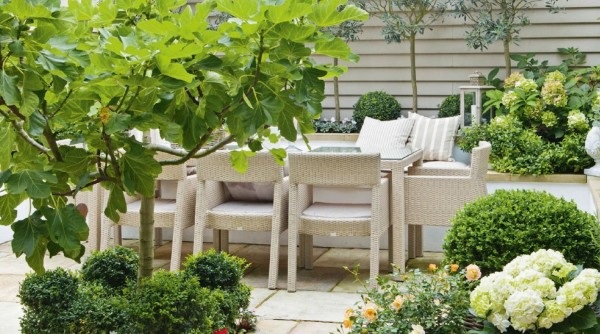
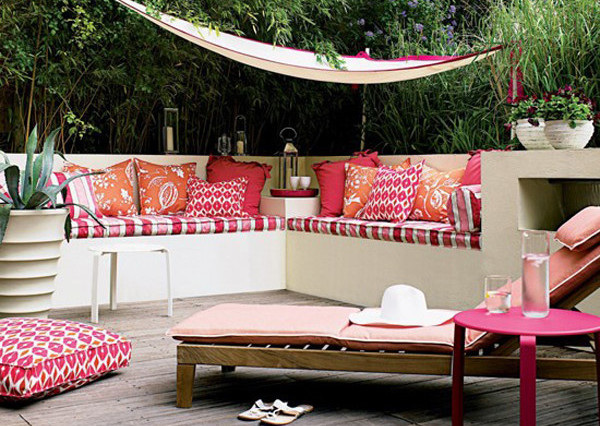
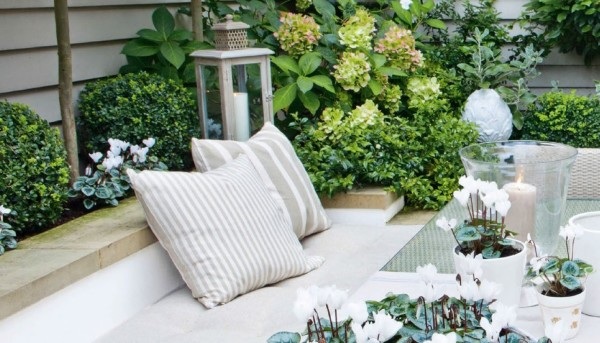
Now let us all cross our fingers for a Summer of sunshine so we can all actually get outside to do everything!
INSPIRATION: WOOD
Wood is definitely one of my favourite materials to work with and something that constantly inspires me. I think that the authentic purity of wood is something that is hard to find in other materials. There is a certain comfort in creating with a material that has been used and been consistently useful for centuries...
Wood is definitely one of my favourite materials to work with and something that constantly inspires me. I think that the authentic purity of wood is something that is hard to find in other materials. There is a certain comfort in creating with a material that has been used and been consistently useful for centuries.
BESPOKE FURNITURE
At Saal Design we have been lucky enough to be able to create some beautiful bespoke furniture and woodwork for our customers. The wood used and crafted has enriched every design, whether it be by giving it a strong foundation, a magical solution or simply that indescribable wow factor.
IN THE BEDROOM
I recently saw these wooden headboards whilst I was searching for some fresh ideas and instantly wanted a willing customer to design one for. In relation to my previous ‘Old Meets New’ post a lot of these are rejuvenated pieces of woodwork which add a beautiful unique quality to each of the rooms.
A GOOD TABLE
I love a good table and I find it hard to beat a well-crafted wooden one. It is something that can make a bold and practical statement.
FLOOR
Of course one of the best features in a house can be the one that everyone walks over. A wooden floor can give so much to a space. I recently had a new wooden floor in my living room and upon completion the whole house felt like it had been transformed. At the moment, I am really liking the wider panels and innovative finishes.
TRUST IN WOOD
Unlike in fashion, when a new trend comes along every 6 months it is not so easy in interiors to simply ‘get a new wardrobe’. The aim is to find those staple items that one will love for years and years. Wood is one of those staples. It is adaptable and reliable and a material that I’m sure will continue to a inspire me as a designer for many years to come.
EASTER
I love Easter. For me, it has all the comfort of a family Christmas without all the stress…what could be better? Recently, I’ve been embracing the holiday more and more and I think it’s a really good excuse to have a bit of fun at home. Here are some of the things I do to get in the mood and really make Easter weekend an occasion...
I love Easter. For me, it has all the comfort of a family Christmas without all the stress…what could be better? Recently, I’ve been embracing the holiday more and more and I think it’s a really good excuse to have a bit of fun at home. Here are some of the things I do to get in the mood and really make Easter weekend an occasion:
EGGS
My favourite easter decoration has to be the classic egg- from the beautiful speckled ceramic to the bright and bold. I love to incorporate them into a spring flower arrangement or have them nested in bowls around the house. This decoration is all about subtlety, be careful not to over egg it. (I had to use that pun somewhere!)
COOKING
One thing that can give your home that extra special touch is something that no designer can draw up or include on paper- the smell of good old home baking. We love to get creative with our baking at home during Easter so I thought I’d share some of our favourite bakes that make Easter Afternoon Tea even more delicious.
SIMNEL MUFFINS
Ingredients
250g mixed dried fruits
grated zest and juice 1 medium orange
175g softened butter
175g golden caster sugar
3 eggs , beaten
300g self-raising flour
1 tsp mixed spice
½ tsp freshly grated nutmeg
5 tbsp milk
175g marzipan
200g icing sugar
2 tbsp orange juice for mixing
mini eggs
Method
- Tip the fruit into a bowl, add the zest and juice and microwave on medium for 2 minutes (or leave to soak for 1 hour). Line 12 deep muffin tins with paper muffin cases.
- Preheat the oven to fan 180C/ 160C/gas 4. Beat together the butter, sugar, eggs, flour, spices and milk until light and fluffy (about 3-5 minutes) – use a wooden spoon or hand held mixer. Stir the fruit in well.
- Half fill the muffin cases with the mixture. Divide the marzipan into 12 equal pieces, roll into balls, then flatten with your thumb to the size of the muffin cases. Put one into each muffin case and spoon the rest of the mixture over it. Bake for 25-30 minutes, until risen, golden and firm to the touch. Leave to cool.
- Beat together the icing sugar and orange juice to make icing thick enough to coat the back of a wooden spoon. Drizzle over the muffins and top with a cluster of eggs. Leave to set. Best eaten within a day of making.
AMERICAN SUGAR COOKIES
Ingredients
132g unsalted butter, softened
225g superfine sugar, or granulated sugar, processed in blender or food processor for 30 seconds
½ tsp. Salt
1 large egg
1 large egg yolk
2 tsp. Vanilla extract
½ tsp. Almond extract or emulsion, optional
375g plain flour
Method
Cream butter, sugar and salt until light and fluffy, about 3 minutes with mixer set at medium speed. Add yolk, beat well. Add whole egg, vanilla and optional almond extract and beat until well-incorporated. Add flour; beat at low speed just until flour is mixed in; do not overmix. Divide dough in halves or thirds and wrap in plastic wrap. Refrigerate until firm, at least one hour and up to 2 days.
Preheat oven to 190°C. Dust work surface and rolling pin with flour. Roll dough to 1/4″ thick, sprinkling with additional flour as needed to prevent sticking. Cut into desired shapes and place on parchment or silicone-lined pans. Bake in preheated oven until cookies appear dry on the surface and are light golden brown on the edges, about 10 minutes (very large cookies may take up to 12 or 13 minutes). Remove from cookie sheets to cooling racks and cool completely before decorating.
FLOWERS
Bring in the flowers and catkins and create some colourful arrangements. Have some fun with it!













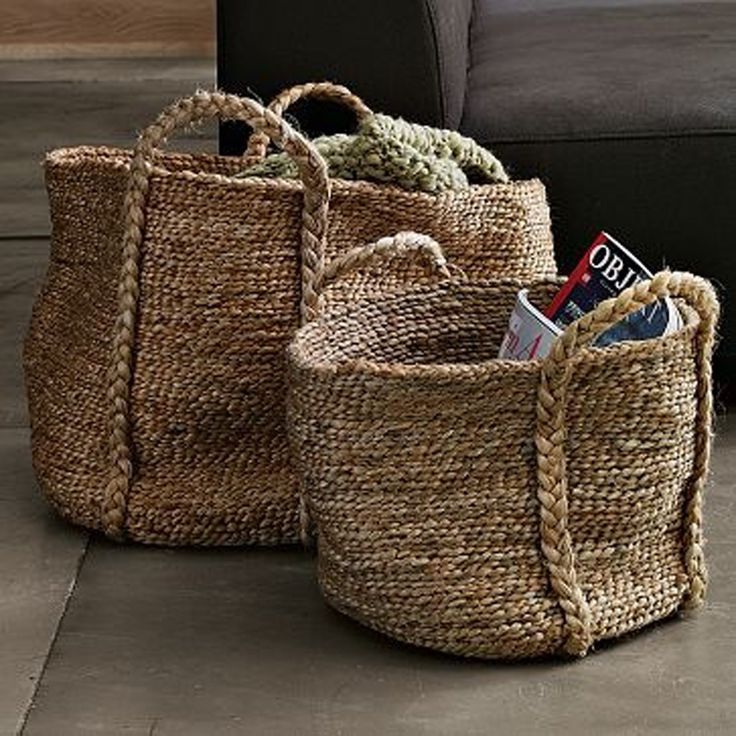














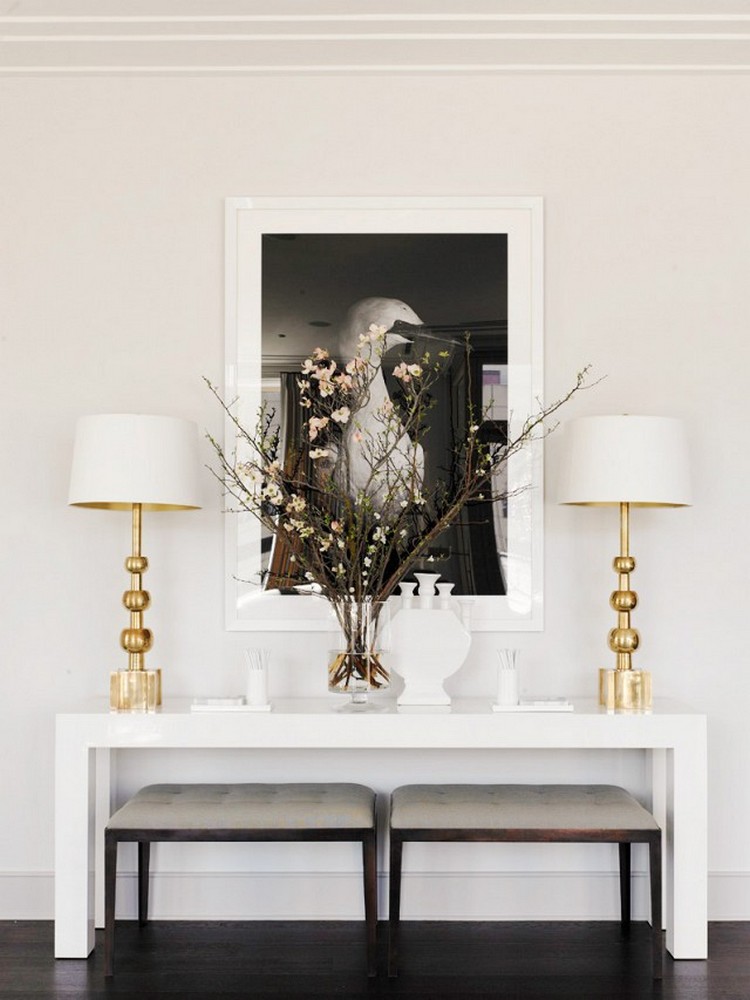
















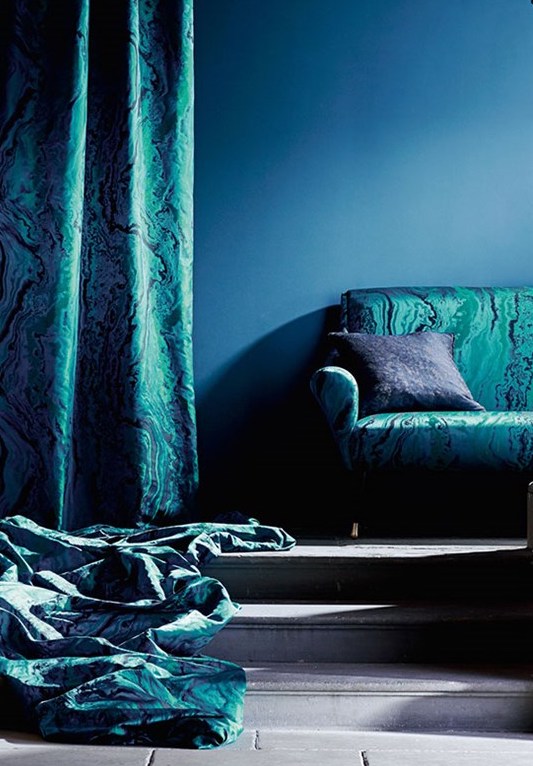
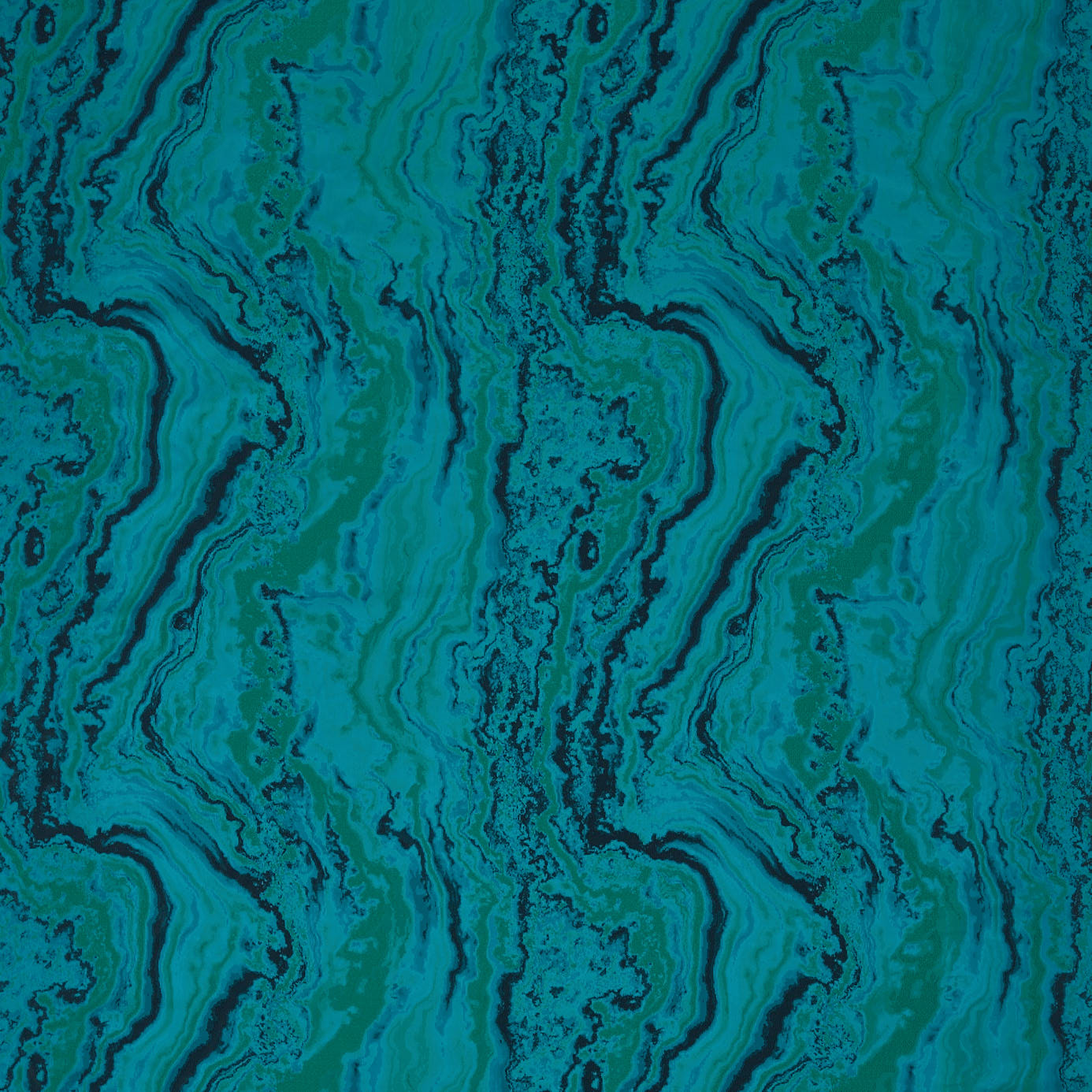
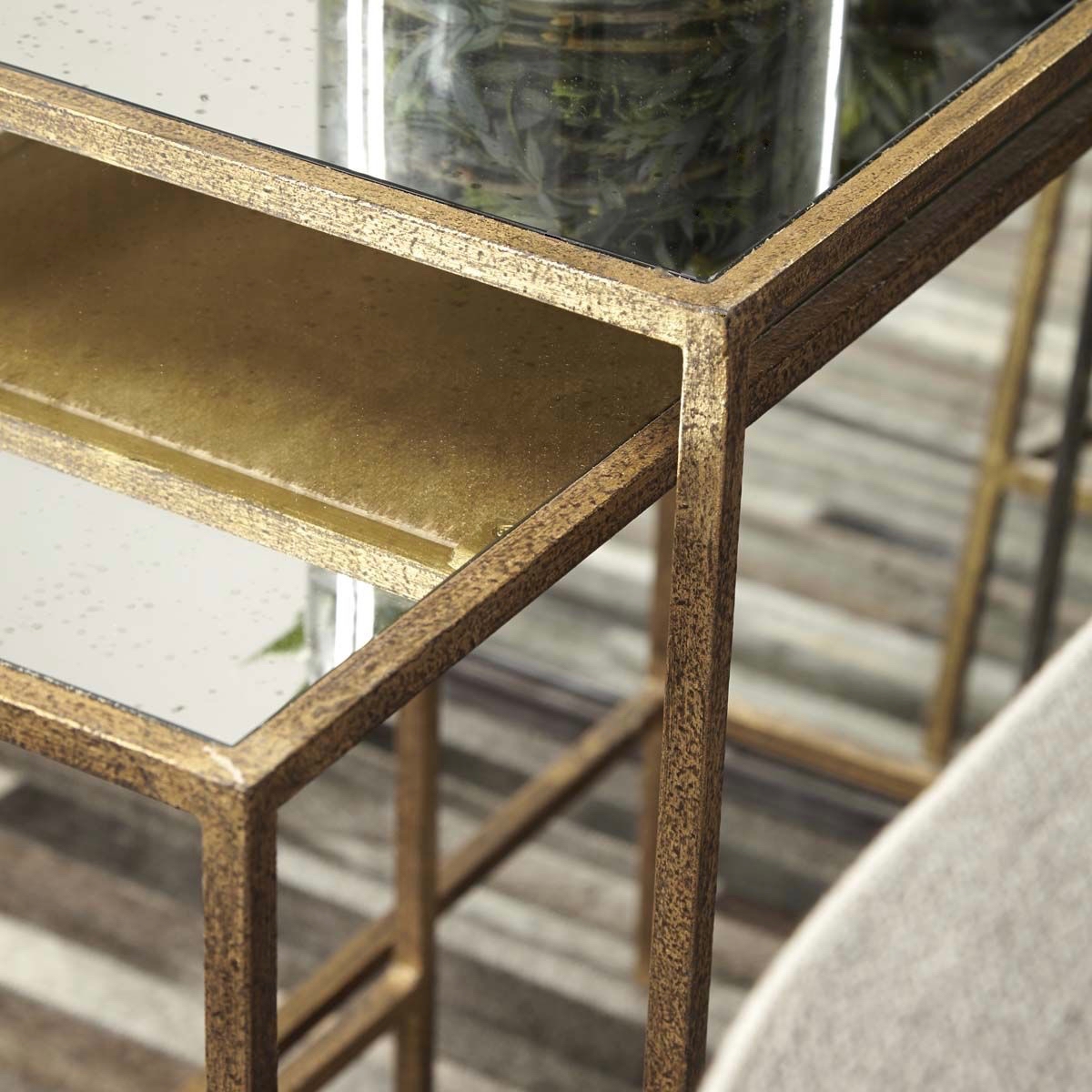
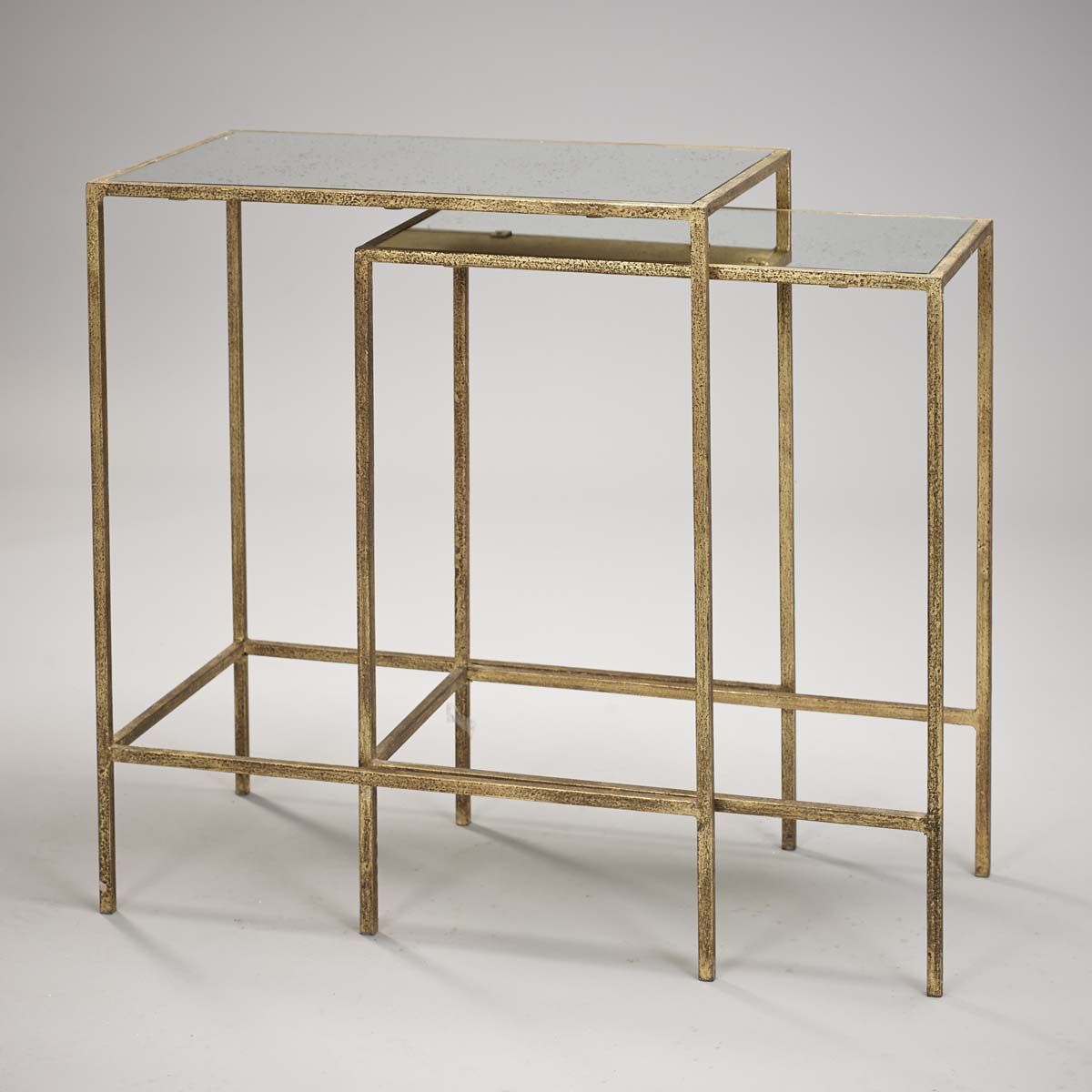
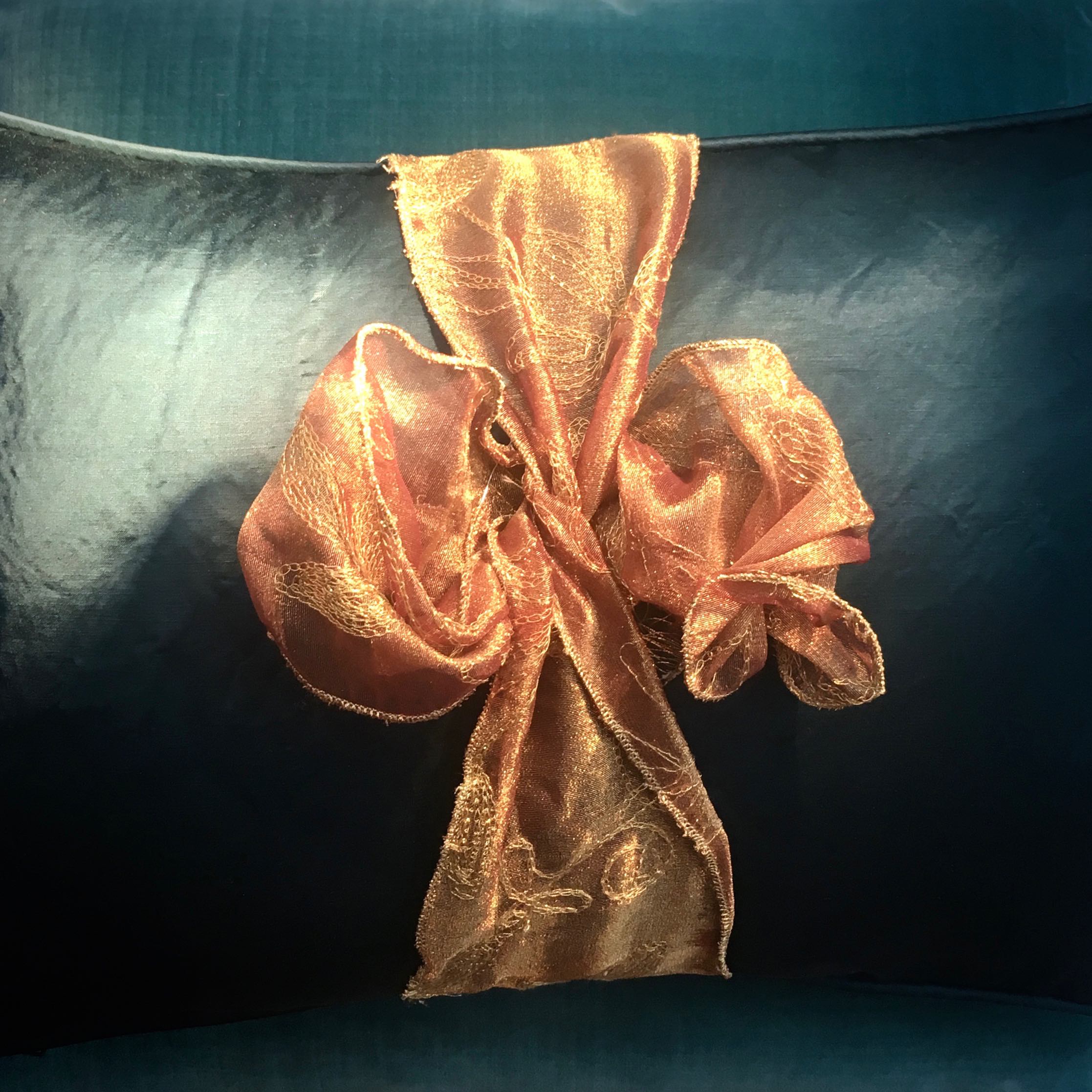

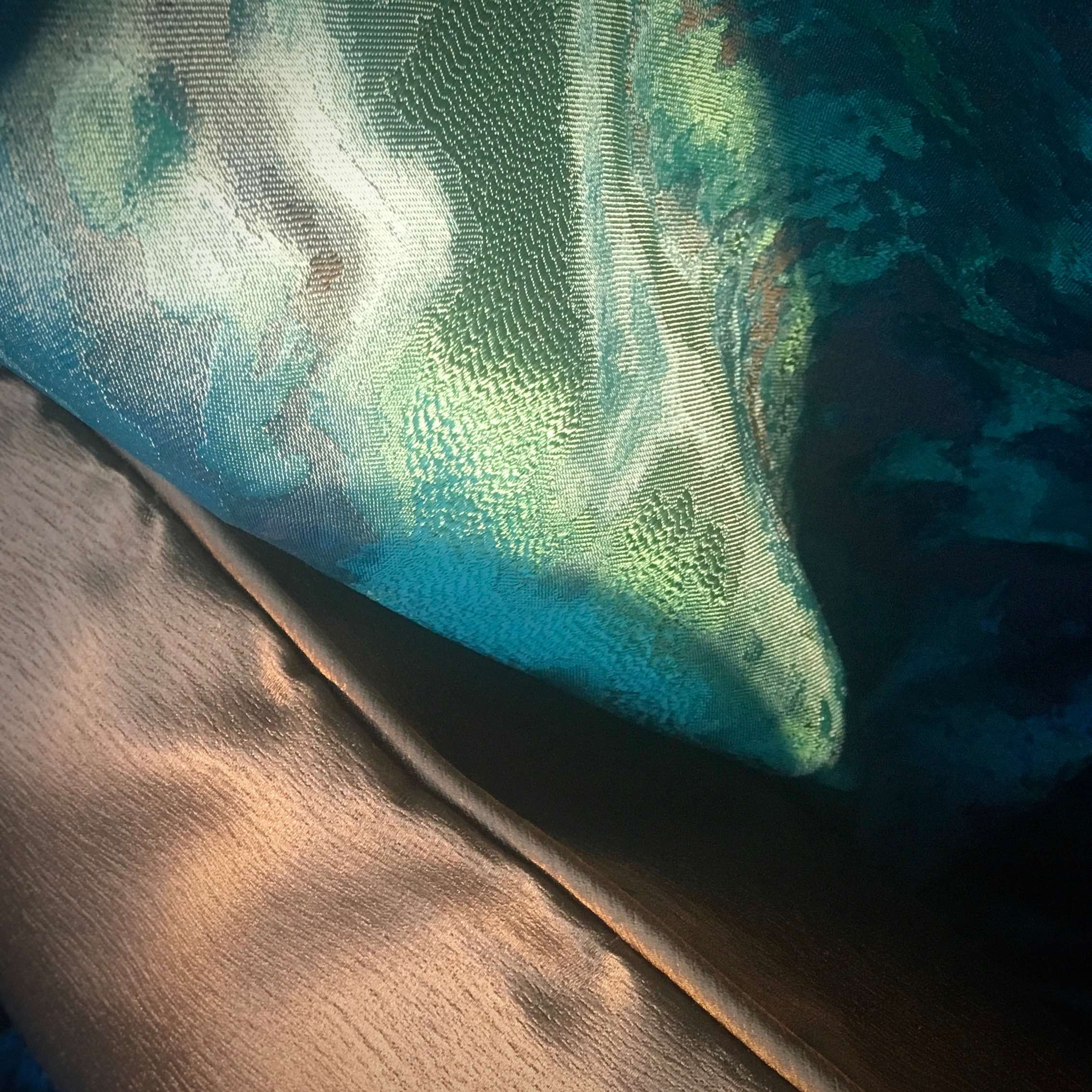













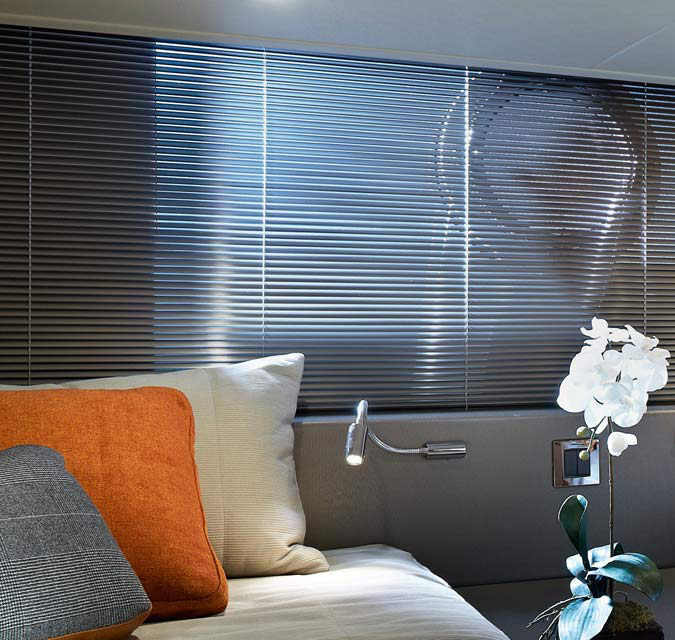

























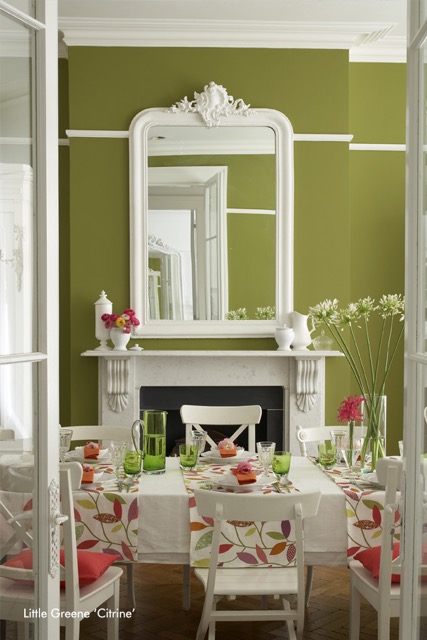







































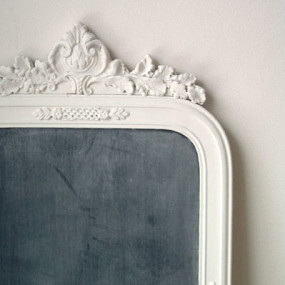
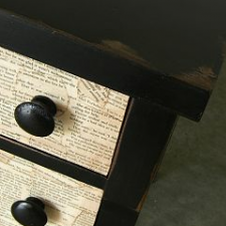
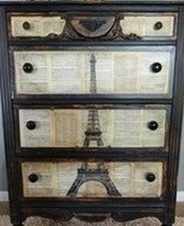
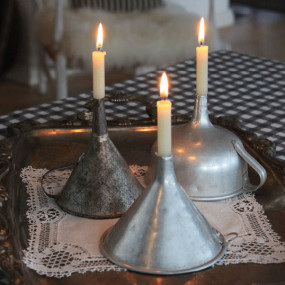
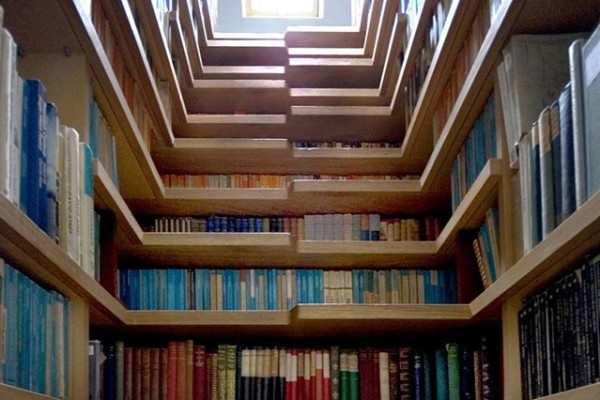
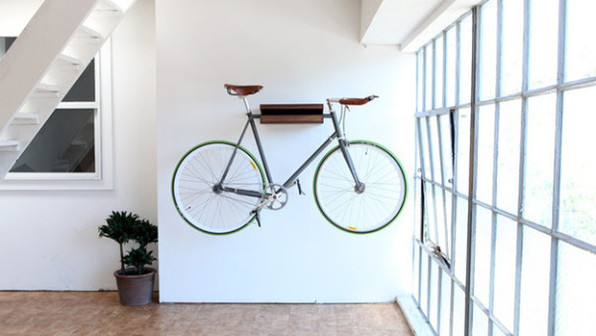
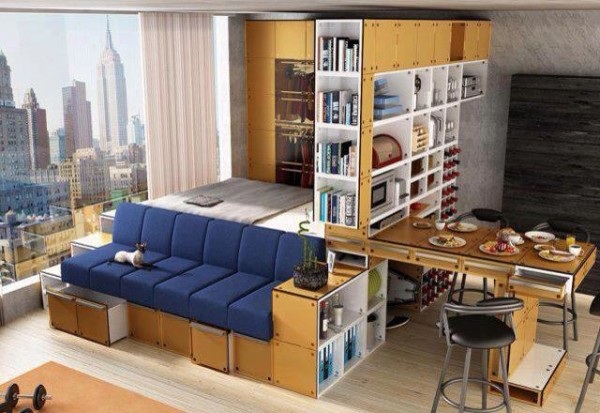
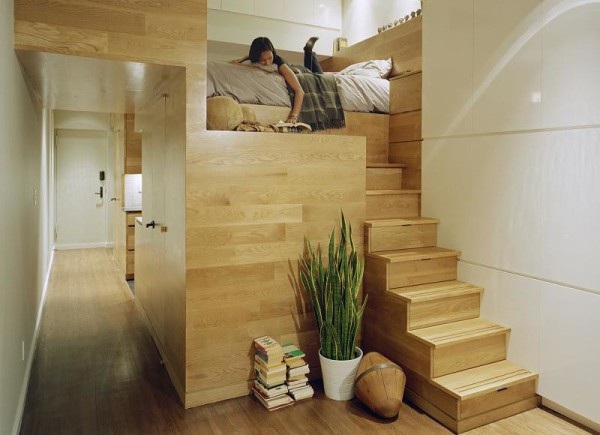

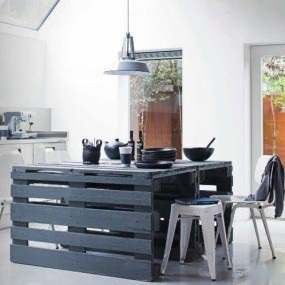
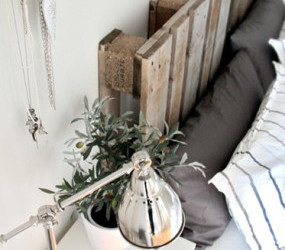


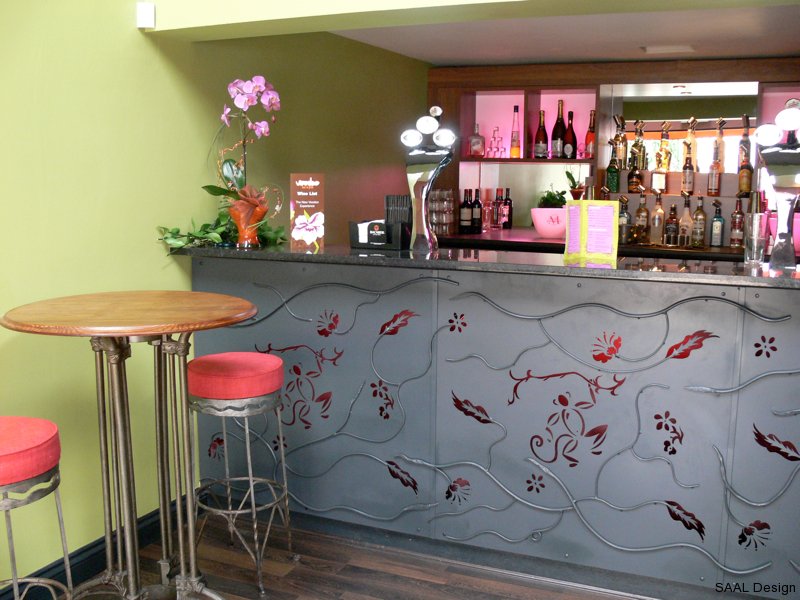
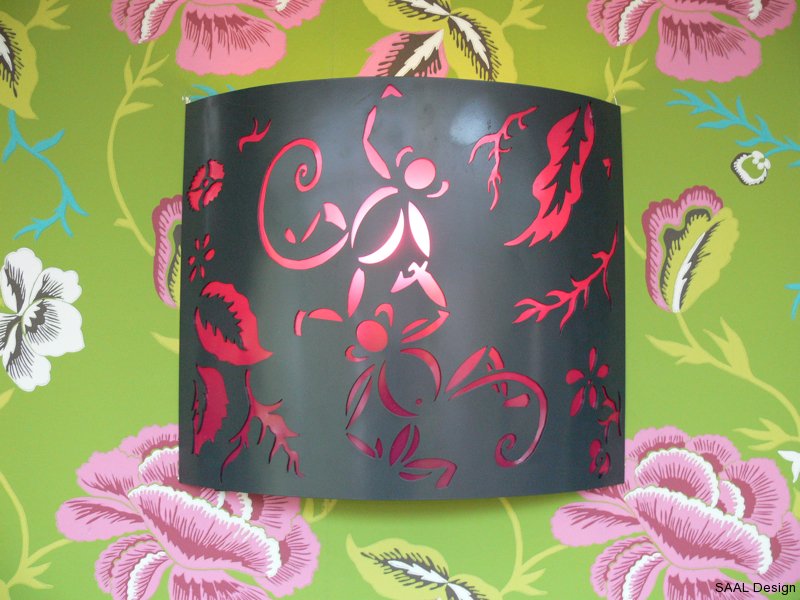
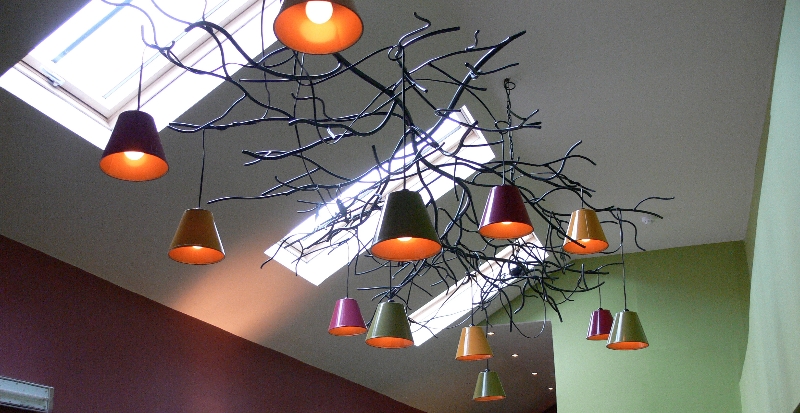


















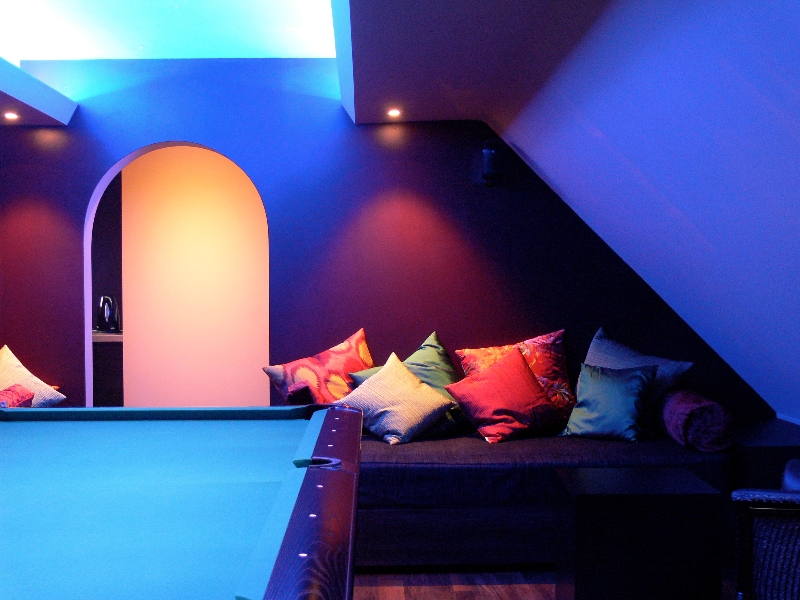
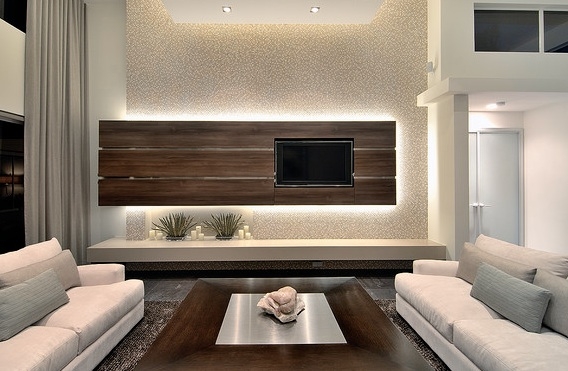
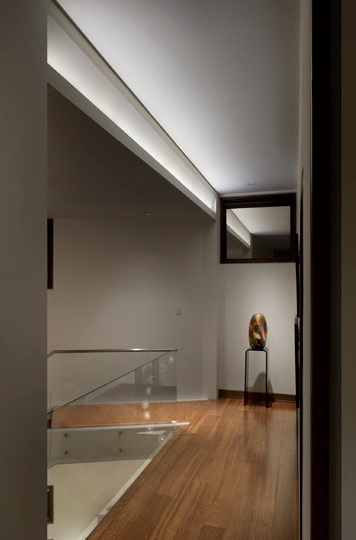


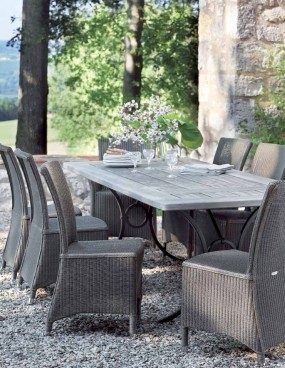
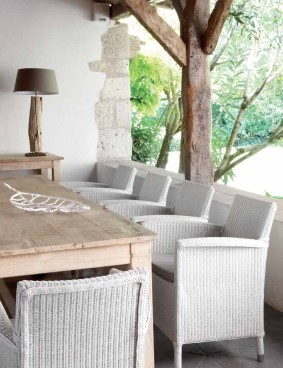













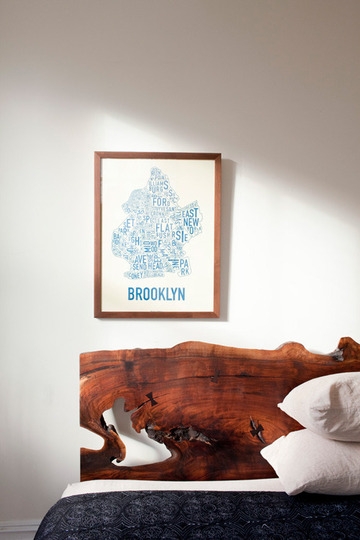






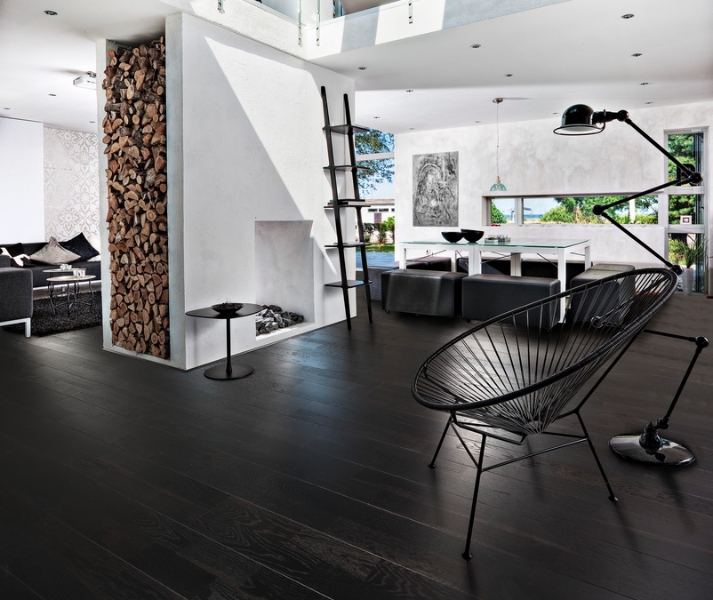
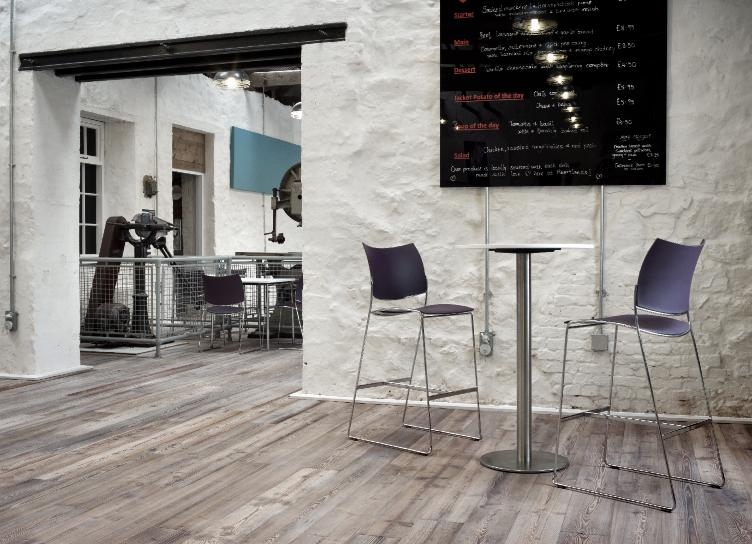
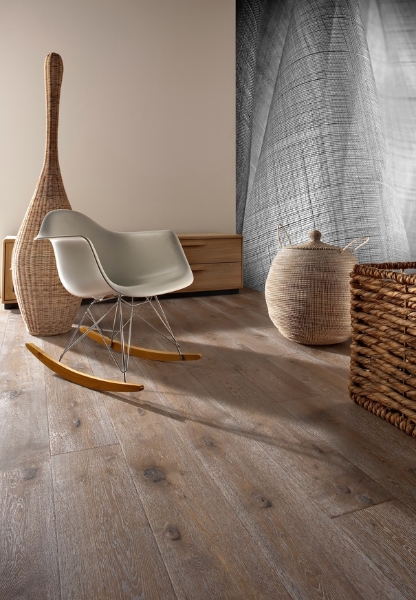
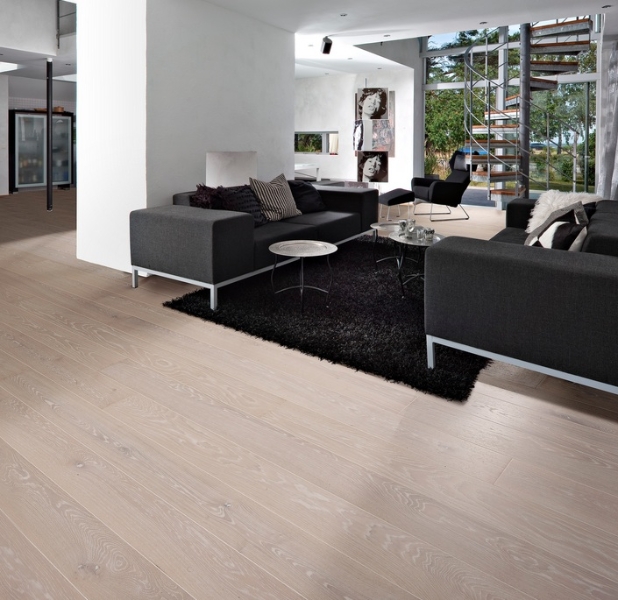

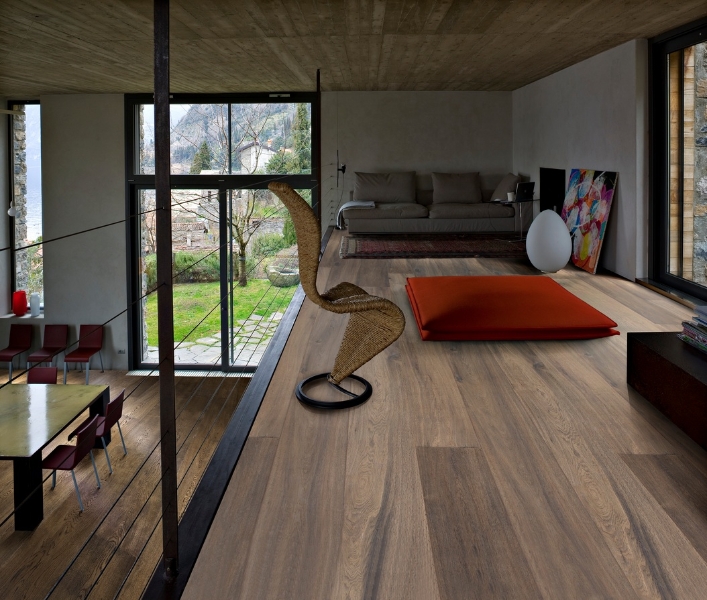







The bedroom is one of the most important rooms in the house. Recent studies have shown that people are starting to spend more time in their bedrooms than in their living rooms. It is a room that can have a big impact on our physical and mental well-being and it is important that this is taken into account during the design process...